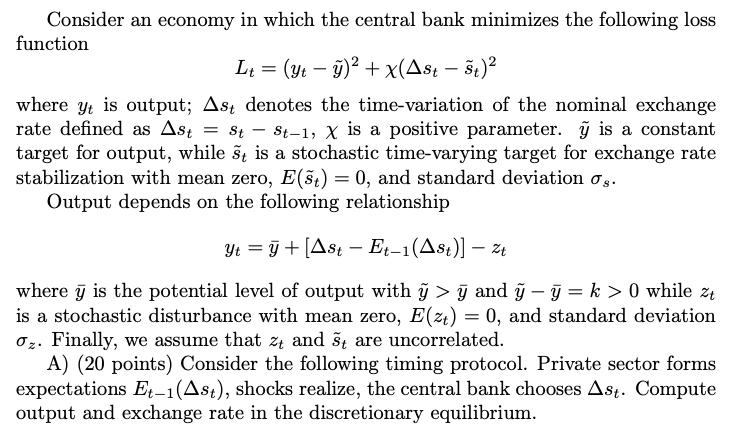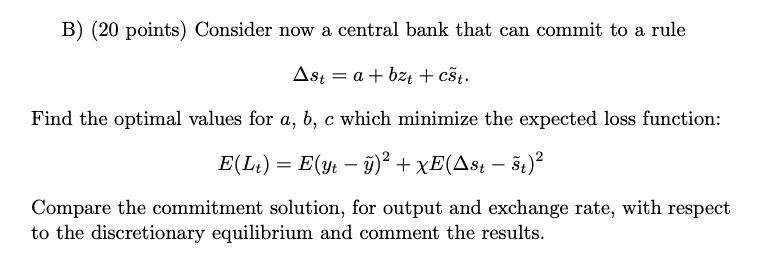Answered step by step
Verified Expert Solution
Question
1 Approved Answer
Consider an economy in which the central bank minimizes the following loss function Lt = (yt - y) + x(Ast - t) where yt


Consider an economy in which the central bank minimizes the following loss function Lt = (yt - y) + x(Ast - t) where yt is output; Ast denotes the time-variation of the nominal exchange rate defined as Ast = St St-1, X is a positive parameter. is a constant target for output, while t is a stochastic time-varying target for exchange rate stabilization with mean zero, E(t) = 0, and standard deviation o. Output depends on the following relationship - Yt = y + [Ast-Et-1(Ast)] - Zt where y is the potential level of output with y > y and y - y = k> 0 while zt is a stochastic disturbance with mean zero, E(zt) = 0, and standard deviation . Finally, we assume that zt and t are uncorrelated. A) (20 points) Consider the following timing protocol. Private sector forms expectations Et-1(Ast), shocks realize, the central bank chooses Ast. Compute output and exchange rate in the discretionary equilibrium. B) (20 points) Consider now a central bank that can commit to a rule Ast= a + bzt + cst. Find the optimal values for a, b, c which minimize the expected loss function: = E(yt - y) + xE(Ast - t) E(Lt): Compare the commitment solution, for output and exchange rate, with respect to the discretionary equilibrium and comment the results.
Step by Step Solution
There are 3 Steps involved in it
Step: 1
Answer Part A Discretionary Equilibrium In the discretionary equilibrium the central bank chooses th...
Get Instant Access to Expert-Tailored Solutions
See step-by-step solutions with expert insights and AI powered tools for academic success
Step: 2

Step: 3

Ace Your Homework with AI
Get the answers you need in no time with our AI-driven, step-by-step assistance
Get Started


